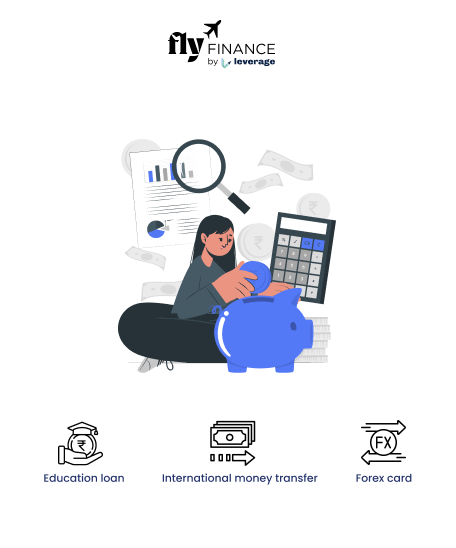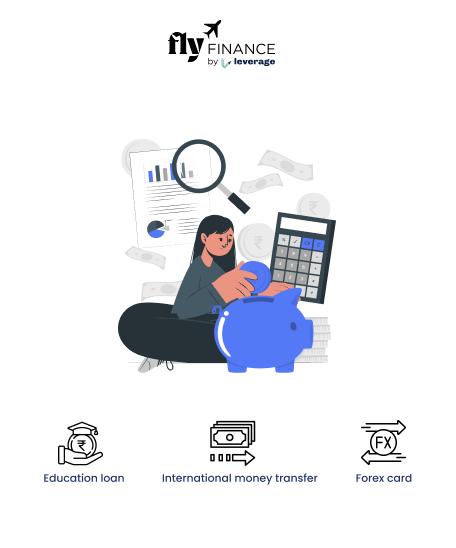Credit underwriting plays a pivotal role in the banking system, ensuring that loans are granted responsibly and risks are managed effectively. It is a process that evaluates whether a borrower is eligible for a loan and determines the terms of the loan.
This blog explores the concept of credit underwriting, its significance, and how it works in the banking sector. Without further ado, let’s get started!
Table of contents
What Is Credit Underwriting in Banking?
Credit underwriting is the process banks and financial institutions use to assess the creditworthiness of a borrower before approving credit or loans to study abroad. It involves analyzing the borrower’s financial profile to determine their ability to repay the loan without defaulting.
The process of credit underwriting helps banks make informed lending decisions while minimizing financial risks. Here are the key aspects of credit underwriting:
- Risk Assessment: Evaluates the likelihood of a borrower defaulting on a loan.
- Financial Analysis: During the education loan process, the lender reviews the borrower’s income, assets, liabilities, and credit history.
- Loan Structuring: Determines the loan amount, interest rate, and repayment terms based on the borrower’s profile.
Also Read:
- Date of Commencement in Education Loan: How is it Calculated?
- What is Speculation in the Foreign Exchange Market?
Why is Credit Underwriting Important in Banking?
The underwriting process is critical for maintaining the financial health of banks and protecting borrowers from taking on unmanageable debt. By carefully assessing applications, banks ensure that loans are granted to individuals or businesses capable of fulfilling repayment obligations.
Below, we have highlighted the importance and benefits of credit underwriting in the banking ecosystem. Let’s have a look and understand:
- Reduces Financial Risk: Helps banks avoid losses by identifying high-risk borrowers.
- Ensures Fair Lending: Promotes transparency by evaluating applications based on standardized criteria.
- Supports Economic Stability: Encourages responsible borrowing, preventing excessive debt accumulation.
- Customizes Loan Terms: Allows banks to tailor loan conditions to suit the borrower’s financial capacity.
How Does Credit Underwriting Work?
The credit underwriting process involves a series of steps that banks follow to evaluate loan applications. Each step is designed to gather and analyze information to make sound lending decisions.
The following steps explain the typical workflow of credit underwriting in banking:
- Application Review: The bank collects the borrower’s personal and financial details, including income, employment status, and loan purpose.
- Credit History Check: The underwriter examines the borrower’s credit score and report to assess past repayment behavior.
- Financial Assessment: The bank evaluates the borrower’s income, expenses, and existing debts to determine repayment capacity.
- Collateral Evaluation: For secured education loans, the bank assesses the value of assets (e.g., property or vehicles) offered as collateral.
- Decision and Loan Terms: Based on the analysis, the bank approves or rejects the loan and sets appropriate terms, such as education loan interest rates and tenure.
Types of Credit Underwriting
Credit underwriting varies depending on the type of education loan and the borrower’s profile. Different approaches are used to assess individuals, businesses, or specific loan products. Here are the common types of credit underwriting:
- Manual Underwriting: Involves a detailed, hands-on review by an underwriter, often used for complex or high-value loans.
- Automated Underwriting: Relies on algorithms and software to analyze data quickly, commonly used for personal loans or credit cards.
- Hybrid Underwriting: Combines manual and automated methods for a balanced approach, ensuring efficiency and accuracy.
Also Read:
- CIBIL Score for Personal Loans: Know It All Here
- How to Increase Your CIBIL Score for Better Education Loans?
Factors Considered in Credit Underwriting
To approve a loan, banks consider various factors that reflect the borrower’s financial stability and repayment ability. These factors help underwriters make objective decisions. The key factors in credit underwriting:
- Credit Score: A numerical representation of the borrower’s creditworthiness, typically ranging from 300 to 900.
- Income Stability: Consistent income ensures the borrower can meet repayment obligations.
- Debt-to-Income Ratio: Measures the proportion of income spent on debt repayments, indicating financial health.
- Collateral Value: For secured loans, the quality and value of assets pledged as security are critical.
- Loan Purpose: The reason for borrowing (e.g., home purchase, business expansion) influences the underwriting decision.
Credit underwriting in banking is a cornerstone of responsible lending, ensuring that loans are granted to borrowers who can repay them. By evaluating factors like credit scores, income, and collateral, banks minimize risks and offer tailored loan solutions.
FAQs on Credit Underwriting
Credit underwriting in banking evaluates a borrower’s creditworthiness to ensure they can repay a loan, minimizing financial risks for banks and promoting responsible lending.
The duration of the credit underwriting process varies based on the loan type and complexity. Automated underwriting for personal loans may take minutes, while manual underwriting for mortgages can take days or weeks.
For credit underwriting, banks assess credit score, income stability, debt-to-income ratio, collateral value (for secured loans), and the purpose of the loan to determine eligibility.
Yes, a low credit score may lead to loan rejection or higher interest rates, as it indicates a higher risk of default based on past credit behavior.
An underwriter assesses loan applications, reviews financial data, and determines the risk level to approve or deny loans while setting appropriate terms.
Credit underwriting is the evaluation process to assess a borrower’s eligibility, while loan approval is the final decision to grant the loan based on underwriting results.
Collateral is important in credit underwriting because it provides security for secured loans, reducing the bank’s risk by allowing asset seizure if the borrower defaults on repayment.
Personal loan underwriting focuses on individual income and credit history, while business loan underwriting evaluates business revenue, cash flow, and market conditions.
If your application fails, the bank may reject the loan or offer alternative terms, such as a lower loan amount or higher interest rate, based on your financial profile.
To learn more about bank accounts for students, the best education loans, forex, banking experience for global students, or international money transfers, reach out to our experts at 1800572126 to help ease your experience with studying abroad.
Follow Us on Social Media





























